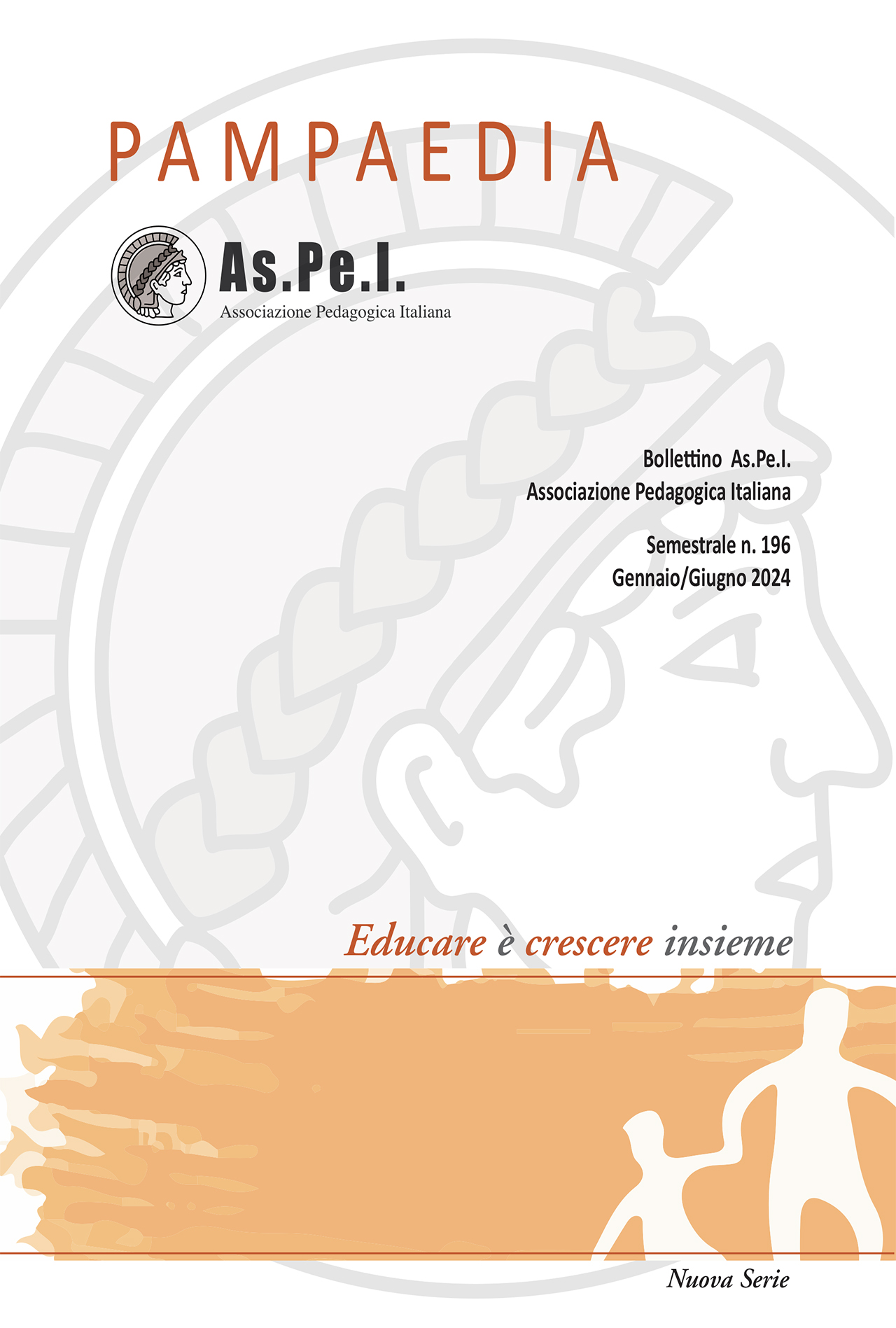The added value of immersive music labs in school design: for creative and critical use of technology
DOI:
https://doi.org/10.7346/aspei-012024-09Keywords:
music, immersive workshops, active teaching methodology, digital devicesAbstract
Music, as an art form that develops through multiple nonverbal languages (from sound to gestural, from mimic to visual), represents a unique aesthetic experience: through it, in fact, both a hermeneutic-reflexive process of the Self unfolds, reaching to touch the person's most intimate notes, and perceptual paths that give voice to multiple forms of communication. The school represents one of the privileged places in which it is possible to experience this dimension, particularly through that innovative form of active teaching represented by immersive music laboratories. In fact, with their fourfold repartition (from moments of listening to those of composition, from improvisation to sound comprehension and narration), such activities use the potential of digital devices to transform the classroom context into a sensory enveloping and engaging environment, in which the participation of each learner is placed at the center. Based on an upside-down didactic approach, centered on the ideas and needs of the recipients, understood as the creators and actors of the entire process, the realization of such a quality experience (according to the Deweyan meaning), while using technology as a tool for expanding reality, promotes not only its creative and conscious use, complementary with the usual musical instruments, but also constant critical reflection.
Downloads
Published
Issue
Section
License
Copyright (c) 2024 Christian Distefano , Ester Giamberini

This work is licensed under a Creative Commons Attribution 4.0 International License.





